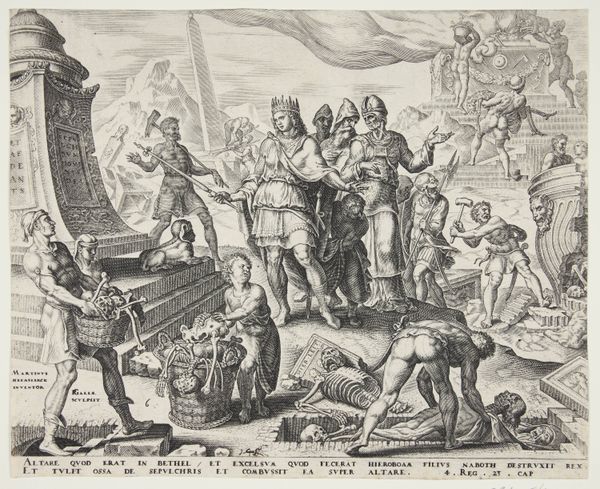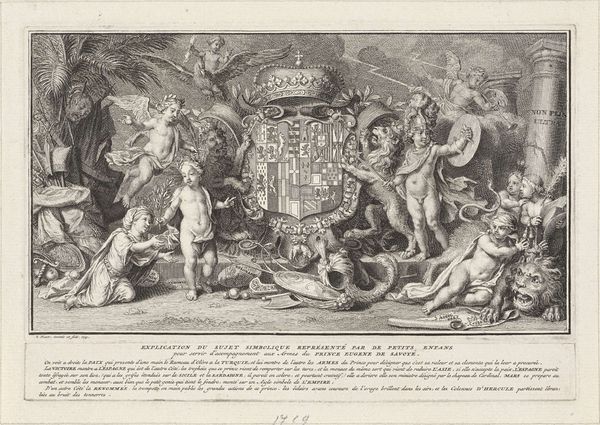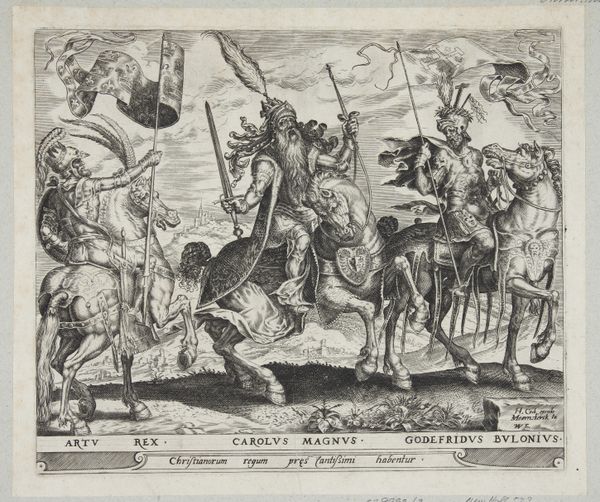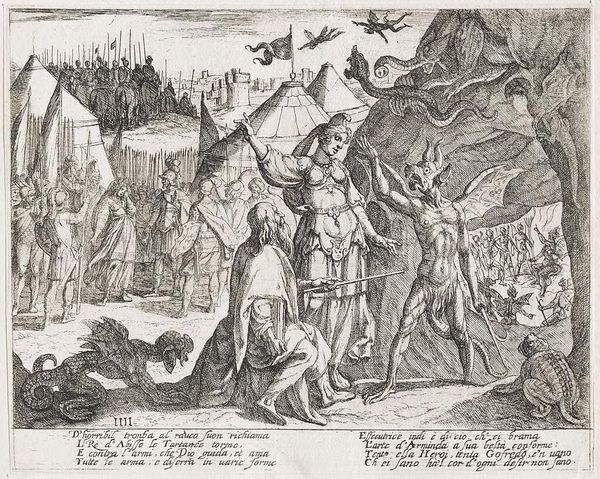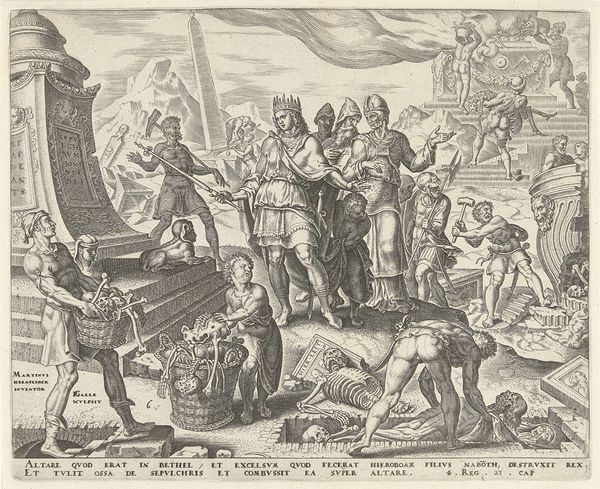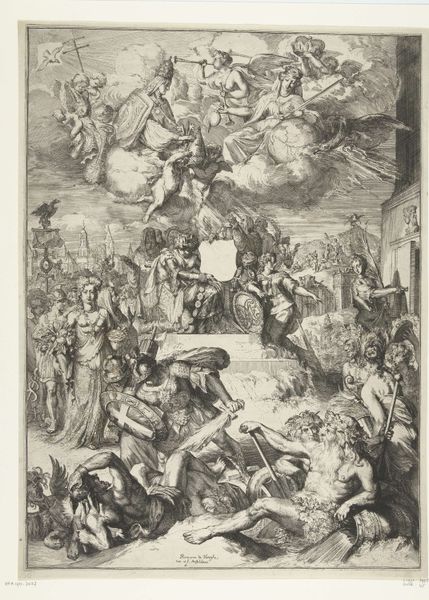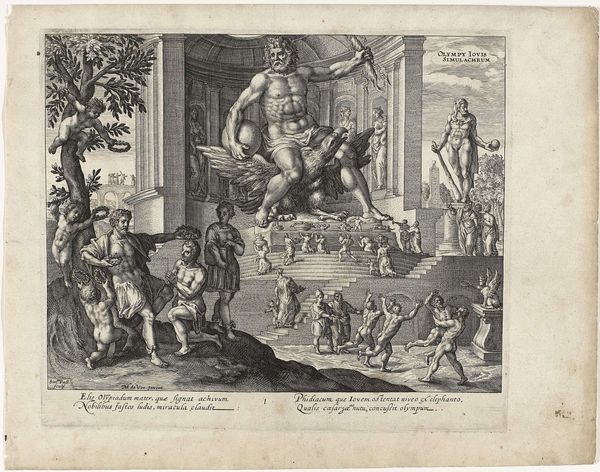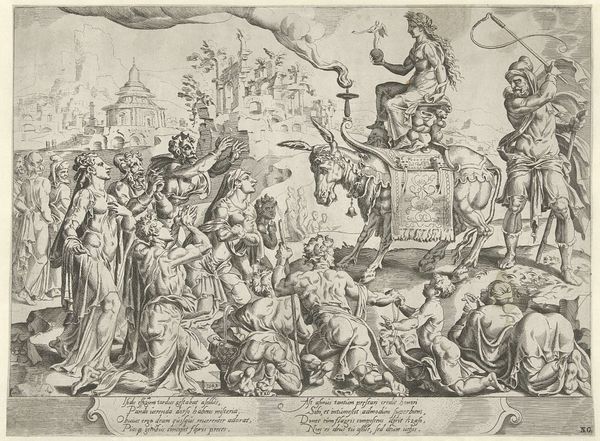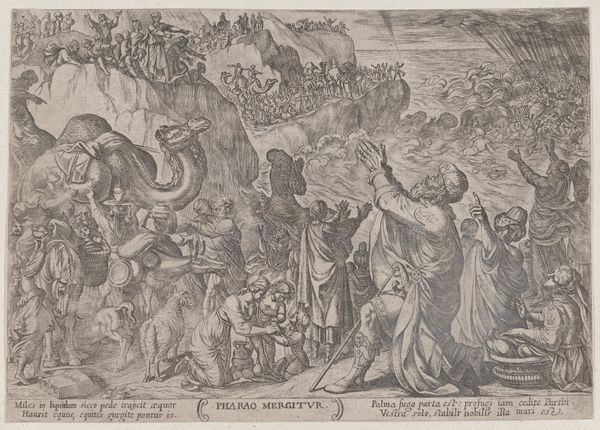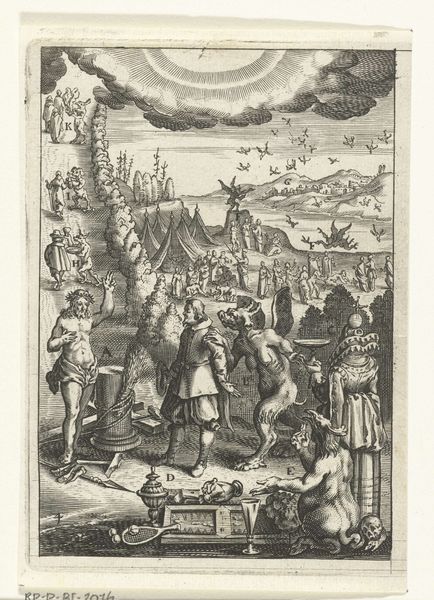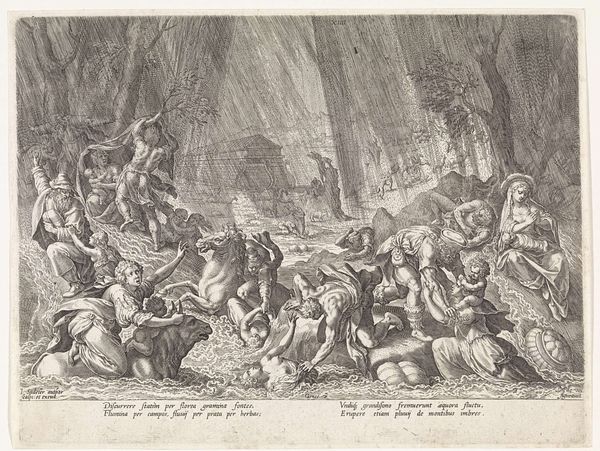
Titelprent voor het derde deel van 'Engelants schouwtoneel' 1691
0:00
0:00
print, etching, engraving
#
allegory
#
baroque
# print
#
etching
#
old engraving style
#
history-painting
#
engraving
Dimensions: height 153 mm, width 199 mm
Copyright: Rijks Museum: Open Domain
Curator: This engraving, "Titelprent voor het derde deel van 'Engelants schouwtoneel'", dates back to 1691 and was created by Adriaen Schoonebeek. It’s an etching and engraving on paper held here at the Rijksmuseum. What strikes you first about it? Editor: The sheer chaos and dynamism! It's overflowing with figures and symbolism. The violence in the bottom left corner is particularly arresting; who are these figures supposed to represent? Curator: This title print introduces the third part of a series depicting major events in Ireland from 1690 through the campaign of William III of Great Britain in 1691. The scene you're referencing likely depicts conflict and subjugation, rendered in a Baroque style common for portraying historical events with allegorical flourishes. Editor: So, this isn't just a record of history, but a highly mediated representation loaded with political messaging? The plinth inscribed with text—"HONI .Y. ETERINIT.NASSAU.M.DORC”— reinforces that reading; are we meant to understand this military campaign as divinely sanctioned, a source of everlasting honour for the House of Orange-Nassau? Curator: Precisely. These title prints acted as propaganda, framing William’s campaigns as righteous and heroic. Consider also the allegorical figures placed centrally, such as the regal figure being pulled in a chariot; the artist employs iconography familiar to viewers of the time. Editor: Right, there’s William III depicted in triumph, no doubt. It feels vital to consider how visual narratives like these served to legitimize colonial power. It's interesting to think about the function this print might have served when it was new compared to how it operates as a historical artifact on display in a national museum today. I think we have to grapple with the legacies and ethical quandaries perpetuated through imagery of this nature. Curator: I agree that reflecting upon its display in the Rijksmuseum prompts important conversations. These works give insight into the intricate interplay of power, representation, and public perception in shaping collective historical memory. Editor: Exactly, understanding that interplay— the push and pull between the subject, the artwork, and the viewer—that’s how we can actively shape a more equitable historical narrative for ourselves, and future generations.
Comments
No comments
Be the first to comment and join the conversation on the ultimate creative platform.
